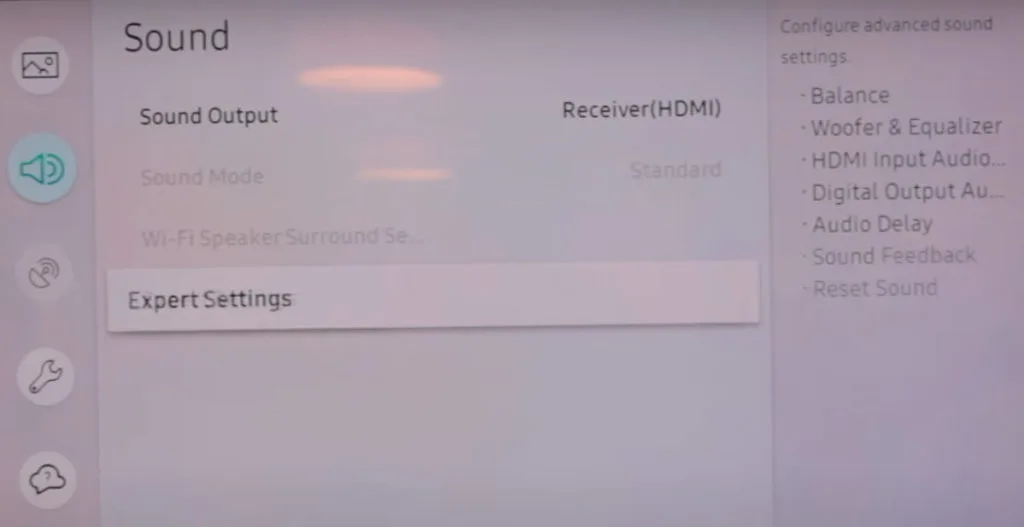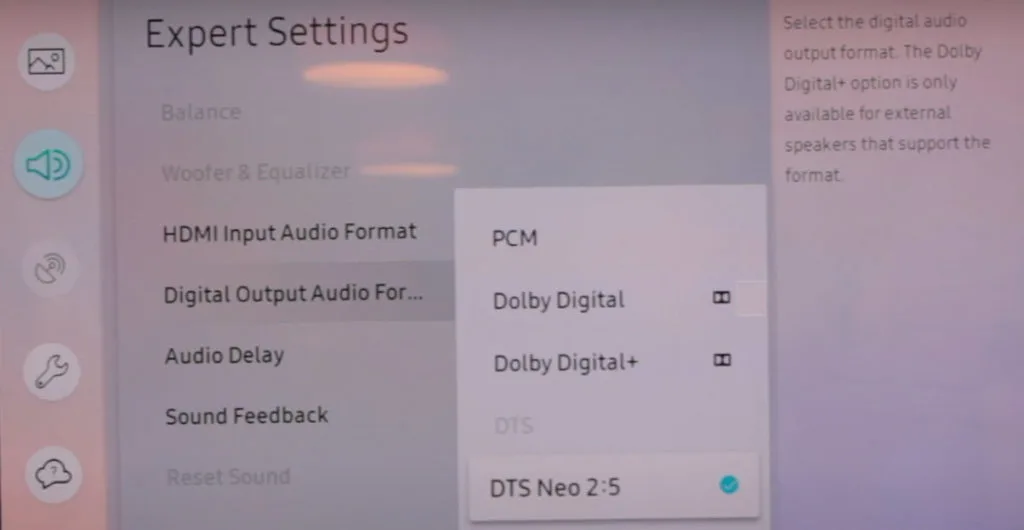How To Change PCM To Dolby Digital on Samsung TV
While we have already addressed the PCM vs bitstream discussion and generated a lot of debate, there is more controversy when we change PCM to Dolby Digital on the Samsung TV models simply because the latter has more channels despite the fact that there is some compression when moving to Dolby.
To change PCM to Dolby Digital on the Samsung TV models go to Settings. From there choose “Sound”. Once in “Sound”, select “Expert Settings”, and then select “Digital Output Audio Format”.

Next, choose your desired audio format which will be Dolby Digital

Dolby Digital is a compressed format, so PCM could be considered better. Dolby True HD, DTS HD MA, Atmos and DTS X are also lossless, so they should be of similar quality to PCM. If the source audio is stereo, it should only be coming from your front left and right speakers unless you use an up mixer.
From a technical standpoint, most people would consider PCM to be worse than Dolby Digital because it offers fewer channels.
Although the compression vs. uncompressed format may have some validity from an audiophile’s view, most people want to retrieve the best sound quality possible from their system.
That is why Dolby Digital will always win the debate. It has more channels. When you don’t have those channels to use at home, PCM is the next viable solution.
Since most televisions, such as the Samsung TV have an automatic setting, you can use that functionality, set it to Auto, and enable the device to select the best option according to the sound landscape that you have at home.
How to Enable Dolby Digital Plus on Samsung TV
To enable Dolby Digital Plus on the Samsung TV, go to Settings, and from there to Sound. Once in “Sound” continue the path by selecting the “Expert Settings” option, and then choose “Digital Output Audio Format”.
Once in the drop-down menu, pick Dolby Digital Plus and the setting is completed.

I am Bob. I work as an audio engineer and audio technician. I work in mastering and arranging bridges in existing songs and the arrangement and orchestration of the chorus. In Planet HiFi I test gear for a couple of days and write a review. I also write about AV topics, amplifiers, speakers, and headphones.

